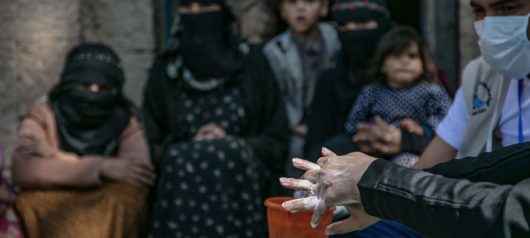News surrounding the COVID-19 pandemic to date has focused on wealthy countries of China, Italy, Great Britain, in the United States. But what about the rest of the world – southern Asia, Africa, the Middle East? Certainly news organizations have a natural inclination to report about their own countries. Beyond this, the main reasons COVID-19 has been seldom reported in low-income nations is simply lack of access to testing. At the moment, COVID-19 testing in these regions is generally only available to wealthy persons who are living in major cities. One can easily imagine how a refugee in a conflict zone could have the disease and absolutely no way to confirm or report the diagnosis.
Case in point: Yemen. Already one of the world’s poorest countries, Houthi opposition forces overran the Yemeni capital in 2014, prompting retaliation by Saudi Arabia. The resulting ongoing conflict has killed more than 100,000 people per ACLED, plus at least 85,000 dead more due to famine connected with the war.
Now enter COVID-19. Just yesterday, the first confirmed case of infection was reported out of Yemen. With no targeted treatment nor effective vaccine, the only means of COVID-19 control is isolation, physical distancing, and hand washing. Yet such measures are antithetical to the circumstances of people displaced by war, people for whom crowded living and insufficient hygiene are the norm. COVID-19, with its highly contagious and lethal nature, quite likely could kill 10% of Yemen’s people – approximately the death of every person living in Chicago.
What hope exists for Yemen + War + COVID-19? In a remarkably humanitarian gesture, a ceasefire declaration yesterday by Saudi Arabia was welcomed by United Nations Secretary-General António Guterres as a pathway to peace and control advancement of COVID-19. The 14-day unilateral ceasefire covered “all ground, maritime and air operations in Yemen starting 9 April.” Let us all applaud and support the vision of Yemen minus war minus COVID-19.

